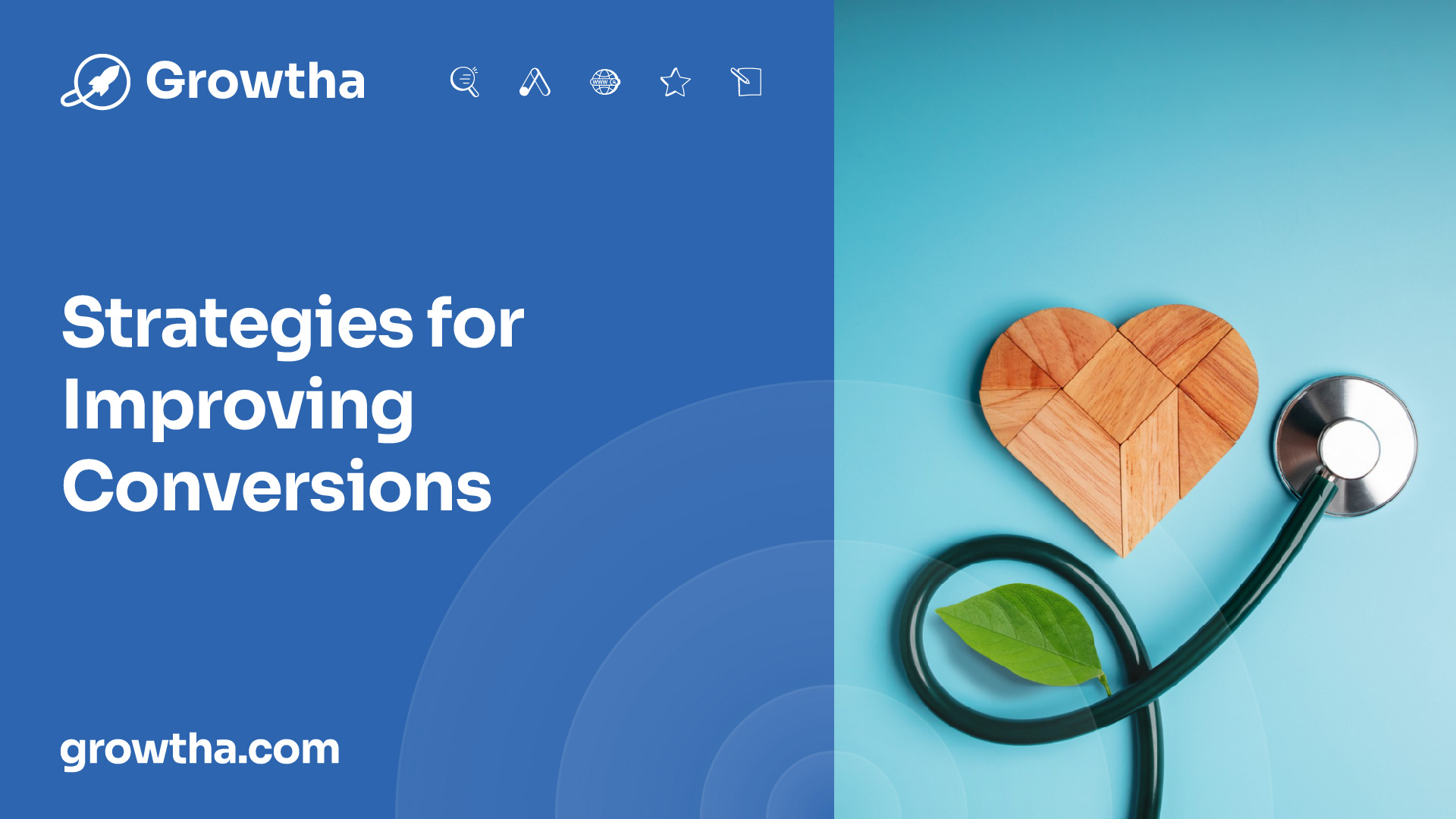Conversion Rate Optimization (CRO) plays a crucial role in healthcare marketing, helping healthcare organizations improve their online presence and convert website visitors into valuable leads or patients. By optimizing various elements of a website, healthcare providers can enhance user experience, build trust, and ultimately increase conversions.
CRO is essential in the healthcare industry to maximize the effectiveness of online marketing efforts and improve patient acquisition. Effective CRO strategies can significantly impact a healthcare organization's success. Here's why CRO is important in healthcare:
Implementing effective CRO strategies in healthcare can yield several benefits, positively impacting both patients and healthcare organizations. Here are some key benefits:
Understanding the importance of CRO in healthcare and the benefits of effective CRO strategies sets the foundation for implementing successful conversion rate optimization techniques. By optimizing website content, enhancing user experience, and leveraging trust signals, healthcare providers can improve their online presence, increase conversions, and ultimately achieve their marketing goals.
When it comes to conversion rate optimization (CRO) in healthcare marketing, understanding key metrics and benchmarks is essential. This allows healthcare organizations to gauge their performance and identify areas for improvement. In this section, we will explore average conversion rates in healthcare and the factors that influence these rates.

The average conversion rate in the healthcare industry is approximately 3%, according to VWO. However, it is important to note that conversion rates can vary based on various factors, such as the type of healthcare organization and the specific goals of the website.

Figures courtesy of LeadSquared, RUNNER Agency
It is important to keep in mind that these figures serve as general benchmarks and may not directly reflect the performance of every healthcare organization. Factors such as target audience, website design, and marketing strategies can significantly impact conversion rates.
Several factors influence the conversion rates of healthcare websites. Understanding these factors can help healthcare organizations optimize their conversion rate.
Studies have shown that quality UX can significantly impact conversion rates. In fact, improving UX can increase a website's conversion rate by over 200 percent [3]. A user-friendly website that is easy to navigate, visually appealing, and optimized for mobile devices can enhance the overall user experience and encourage visitors to take desired actions.
Building trust and credibility with users is crucial for healthcare organizations. Implementing trust signals on websites, such as testimonials, certifications, and security badges, can instill confidence in users and positively influence conversion rates. Trust signals convey that the healthcare organization is reliable and trustworthy, which is particularly important in the healthcare industry where privacy and security are paramount.
By understanding the average conversion rates in healthcare and the factors that influence them, healthcare organizations can set realistic goals and develop effective strategies for improving their conversion rates. Optimizing user experience, leveraging trust signals, and continuously analyzing and optimizing website performance are key steps toward maximizing conversions in the healthcare industry.

When it comes to improving conversion rates in healthcare marketing, there are several effective strategies to consider. By optimizing website content, enhancing user experience, and leveraging trust signals, healthcare organizations can increase conversions and ultimately drive better results.
Optimizing website content plays a crucial role in attracting and engaging potential patients. By ensuring that the content is clear, concise, and tailored to the target audience, healthcare organizations can effectively communicate their value proposition and encourage conversions.
To optimize website content for conversions, it's important to:
A user-friendly website is essential for improving conversions in the healthcare industry. A positive user experience not only increases patient satisfaction but also enhances brand reputation, patient engagement, and loyalty.
To enhance user experience and drive conversions, healthcare organizations can:
Building trust and credibility is crucial in the healthcare industry. By leveraging trust signals, healthcare organizations can reassure patients of the quality of care they will receive and increase conversion rates.
To leverage trust signals effectively, healthcare organizations can:
By implementing these strategies, healthcare organizations can improve conversions by providing a user-friendly experience, building trust with patients, and optimizing website content. Remember, a data-driven approach is key to continuously improving conversion rates and achieving marketing success in the healthcare industry.
Read about: Convert More Consumers with Modern Conversion Rate Optimization Techniques
To optimize conversion rates in the healthcare industry, a data-driven approach is essential. By gathering and analyzing user data, healthcare organizations can gain valuable insights to inform their conversion rate optimization (CRO) strategies. Let's explore the two key aspects of this data-driven approach: gathering and analyzing user data, and implementing targeted changes based on the findings.
Understanding user behavior and preferences is crucial for effective CRO in healthcare. By utilizing various tools and methods, healthcare organizations can gather valuable user data. Some common ways to gather user data include:
Once the user data is collected, it's crucial to analyze and interpret the findings. By identifying patterns, trends, and areas of improvement, healthcare organizations can make informed decisions about their CRO strategies.
Based on the findings from user data analysis, healthcare organizations can implement targeted changes to improve conversion rates. Here are some key areas to focus on:
By continuously monitoring and analyzing the impact of these targeted changes, healthcare organizations can refine their CRO strategies and optimize conversion rates.
A data-driven approach to CRO empowers healthcare organizations to make informed decisions based on user behavior and preferences. By gathering and analyzing user data, and implementing targeted changes, healthcare organizations can improve the user experience, build trust, and ultimately increase conversions.
When it comes to conversion rate optimization (CRO), there are certain mistakes that healthcare marketers should be aware of and avoid. By understanding these pitfalls, healthcare organizations can make informed decisions and implement effective strategies to improve conversions. Here are three common CRO mistakes to be mindful of:
Optimizing for the right keywords is crucial for driving targeted traffic to your healthcare website. However, failing to optimize for the correct keywords can significantly impact your conversion rates. It's essential to conduct thorough keyword research to identify the terms and phrases that your target audience is using when searching for healthcare-related information or services.
By targeting the wrong keywords, you may attract visitors who are not interested in your offerings or fail to reach those who are actively seeking your services. To avoid this mistake, invest time in keyword research and ensure that your website's content aligns with the keywords that are most relevant to your target audience.
Compelling copy is essential for capturing the attention and interest of your website visitors. Poorly written or unengaging copy can deter potential patients and lead to lower conversion rates. When crafting copy for your healthcare website, it's important to communicate your unique value proposition clearly and concisely.
Focus on addressing the needs and concerns of your target audience, highlighting the benefits of your healthcare services or products. Use persuasive language, testimonials, and case studies to build trust and credibility. Remember to incorporate strong and enticing calls to action that guide visitors towards the desired conversion goals.
The design and usability of your healthcare website play a crucial role in conversions. A poorly designed website with complicated navigation, slow loading times, or confusing layouts can frustrate visitors and drive them away. To optimize conversions, it's important to prioritize user experience (UX) and ensure that your website is intuitive, visually appealing, and easy to navigate.
Maximize site speed by optimizing images and minimizing unnecessary elements that may slow down loading times. Implement functional and user-friendly forms to simplify the conversion process. Conduct user testing with real patients or potential users to identify any design or usability issues and make necessary improvements.
By avoiding these common CRO mistakes, healthcare organizations can enhance their conversion rates and optimize the effectiveness of their digital marketing efforts. Remember to continually monitor and analyze data, make data-driven decisions, and iterate on your strategies to improve conversions over time.
[1]: https://www.hawkhealth.com.au/healthcare-conversion-rate-optimisation-guide
[3]: https://www.beaconmm.com/healthcare-marketing-statistics/
[4]: https://practicetechsolutions.com/5-medical-website-design-tips-to-enhance-user-experience/